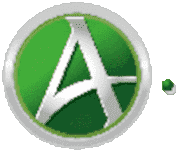Autoplan Insurance
ICBC provides Basic Autoplan insurance. Basic Autoplan is the compulsory coverage for vehicles registered in BC. ICBC also offers optional coverages drivers seeking greater protection. The most common Optional Autoplan coverages are Extended Third Party Liability, Collision, Comprehensive, and Replacement Cost Coverage.
At Allena Chong, we work with you to choose the best options for your needs and budget. We make the fine print easy to understand, so you can be confident that you have the coverage you need when you need it.
Wondering how much your Autoplan insurance will be ? Get an estimate here.

Renew ICBC Online
We’re all about saving time and effort, which is why we offer an online option for renewing your auto insurance. Fill out our Autoplan Renewal Form in minutes to start the process!
Autoplan FAQs
- You will need your previous insurance documents or the ICBC Renewal Letter in order to renew your Autoplan. If you do not have these documents, a support document fee will be charged.
- You will need your drivers license or other proof of identity.
- Registered owner must be present to sign insurance documents unless owner has authorized another person to bring in form by signing the back of the ICBC Renewal Reminder letter (some exceptions apply: please contact us for additional information).
- You will need the BCDL numbers and birth dates of any additional drivers that are required to be listed on your policy.
- Method of payment. You can pay by cheque, debit card, credit card or enroll in ICBC payment plan (Note: if enrolling on ICBC payment plan for the first time, you will need either a void cheque or pre-payment authorization letter from your bank)
Contact us if you need additional information. Our autoplan agents are always ready to help.
Steps to Transferring Vehicle Ownership:
- Obtain the vehicle registration from the seller and verify the VIN of the vehicle and seller’s driver’s license with the registration papers
- Obtain keys and signed registration in exchange for payment (most sellers will require a certified cheque or bank draft). You should also ensure to have a bill of sale signed by both seller and buyer or a gift letter if gifting a vehicle.
- Fill out and sign the transfer form (APV9T) together with the seller. If you are uncertain how to complete the form, bring it to us and we would be happy to assist you
- Take the signed documents to an Autoplan broker and complete the transfer
- Pay the Harmonized Sales Tax to Autoplan broker
- Purchase new insurance or transfer existing insurance to your new car.
- Research the vehicle you are thinking about purchasing (safety features, fuel efficiency, etc) by checking car reviews. www.edmunds.com is a great place to search for car reviews.
- You could also check the average asking price and trade-in value for cars using the Canadian Blackbook, which you can search online at www.canadianblackbook.com. This will give you an idea of what the wholesale price for dealers is and gives you better information for your negotiations =)
- Contact us for a car insurance quote on the vehicle you are planning to purchase to see how much insurance premiums will be
- Purchase vehicle history reports (accidents, lien search, stolen vehicle, etc). You could purchase an ICBC Vehicle Claims reports to see all ICBC claims on the vehicle or for more complete reports including lien searches you could obtain a CarProof or CarFax report. To check for liens only, you can have a search done by some ServiceBC centres (in person only) or the Personal Property Registry (in person or written requests)
Contact us if you need additional information. Our agents are happy to help.
Steps to selling your vehicle in BC:
- Research what your car is worth. You can get an estimate of the trade-in value of your car or the range of listing prices from the Canadian Black Book.
- Clean your vehicle and advertise it online or in other media publications. Some popular sites to list your car on our Autotrader and Craigslist.
- Show your vehicle to prospective buyers
- Gather the necessary documents: in order to transfer the vehicle title, you will need your original insurance and registration documents (copies not accepted) and a transfer / tax form (APV9T), which can be obtained at any Autoplan broker
- Sign the registration papers and provide to purchaser after obtaining payment. You should have a bill of sale signed by both purchaser and seller
- Fill out and sign the vehicle transfer form (APV9T) together with the purchaser
Provide keys to purchaser - Take the signed documents to an Autoplan broker and complete the transfer
- Collect your license plates and cancel your insurance or transfer to another vehicle.
Contact us if you need additional information. Our agents are happy to help.
To import a car from the US to Canada, follow the steps below:
- The first step to importing a car from the US is to check with the Registrar of Imported Vehicles (RIV) to see if the vehicle is admissible to Canada. Find out if the vehicle will need any modifications in order to pass the federal inspection requirements and how much it will cost.
- Check to make sure there are no recalls on the vehicle you are looking to import. To see a list of vehicles with safety recalls click here. If there are recalls, check with the seller to ensure all recalls have been serviced and there are no outstanding recalls.
- Find out if your vehicle is subject to a high excise tax. To find out more about the excise tax, click here
- Purchase a car history report from either Carfax or Autocheck or order an inspection on the vehicle from Carchex to satisfy yourself that there is nothing wrong with the car.
- Once you are happy with the above, you can arrange for the purchase of the vehicle
- If you are satisfied with everything, arrange payment and pickup/delivery of a vehicle
- If you are planning on picking up the vehicle yourself, you will have to fax or email the vehicle title and a completed Vehicle Export sheet to customs 72 hours prior (business days only) to taking the vehicle back to Canada.
- Make sure to check with the US Border crossing that everything is in order prior to pickup and ensure that their office will be open when you plan to cross. If you emailed the documents in step 7 above, you will receive confirmation by email that it has been received
- Arrange for temporary insurance at your local insurance brokerage prior to departing Canada. For the trip from the border to home, you would need temporary insurance called “binder of insurance” (aka. APV38) from an ICBC Autoplan agent. For operating the vehicle in the US, you will need an “in transit permit” from the originating State so ask the seller to refer you to an insurance broker in the respective State.
- When you arrive at seller’s destination, check that the VIN on the vehicle matches the Bill of Sale and Vehicle Title and make sure there’s a “North American Compliant” sticker on the vehicle (usually located on the beam on the drivers side door)
- Once everything checks out, you can make your way back to Canada. Drive to the US border crossing where the vehicle title was faxed to, and identify yourself with your passport and they will check out the bill of sale and vehicle title with the VIN number on the vehicle
- If everything checks out, they will stamp your vehicle’s title to release it to Canada Customs
- Once released, you will have to cross Canada Customs. Tell them you are importing a vehicle and they will ask you to park your vehicle to go into the office and they will give you a Vehicle Import Form 1 to complete
- You will be required to pay an RIV fee, which is $195 + GST/HST
- You will also be required to pay the federal portion of the HST, applicable duties for vehicles that are manufactured outside of North America. There may be other taxes such as Air Conditioning Excise tax and High Emissions Excise tax (make sure you have sufficient limits on your credit card as most Canadian Customs offices do not accept cash or cheques
- Once all this paperwork is done and you have paid, they will stamp your Vehicle Import Form 1 and you will then be able to make your way home
- Bring all your paperwork with you and take the vehicle to Canadian Tire to obtain an inspection. If it passes they will put a sticker that says “Canadian Safety Compliant” and provide you a “passed” inspection report
- Now you can take your paperwork and vehicle to an Autoplan broker and get your car licensed and insured. You will need the following documents:
Proof of identity
- Cheque, credit card, debit card, or another form of payment for payment of any applicable taxes and fees
- Vehicle Import Form 1 with two stamps from CBSA (Canadian Border Services Agency)
- CBSA document B15, or B3, or B4
- The vehicle’s original Certificate of Title or Certificate of Origin
- The Original bill of sale
- The “passed” inspection report signed by the inspector of the designated inspection facility (eg., Canadian Tire)
- The imported vehicle itself
If you do not plan to pick up the vehicle yourself, you could obtain the services of a customs broker like A&A Customs Brokers, which will arrange for the shipping of your car.
Contact us if you need additional information or assistance in registering your car. Our agents are happy to help.
